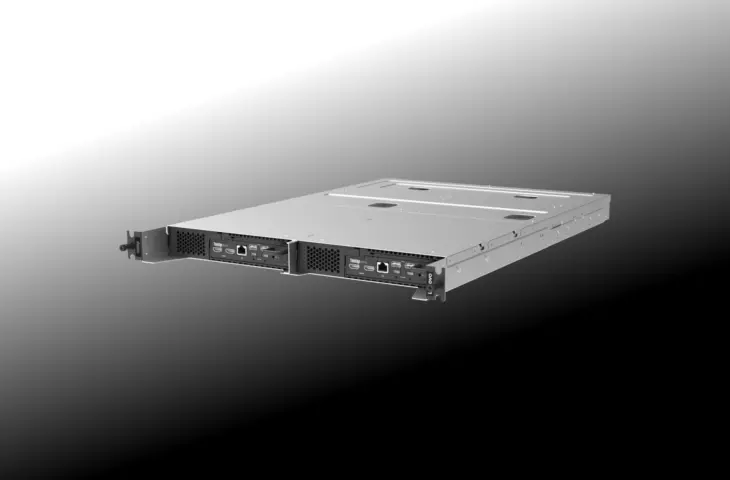Lenovo announces the ThinkEdge SE100. It’s a compact server, equipped with desktop CPUs and GPUs. With this device, Lenovo aims to serve not only edge locations but also SMEs.
At MWC, Lenovo introduces the ThinkEdge SE100. It’s a GPU server tailored for AI workloads, targeting both enterprise edge locations and SMEs. According to Lenovo, the device sits neatly between client and edge. This translates very concretely into the specifications: inside, we find no Intel Xeon or AMD Epyc, but chips from the Core Ultra range.
Powered by Core with P- and E-cores
You can configure the server with an Intel Core Ultra 5 225H, Ultra 7 255H, or an unspecified future Intel Arrow Lake-H chip. The choice for these CPUs is notable, as they configure performance cores with efficiency cores. For the Core Ultra 7, this means six P-cores, eight E-cores, and two additional low power efficiency cores. The Core Ultra 5 has two fewer performance cores.
In other words, not every core on the chips is a workhorse: most of the cores are focused on efficiency. This is interesting for laptops, but usually less relevant for desktops or servers. However, both Lenovo and Intel think that the combination of cores is relevant for the edge and SME server.
Workstation GPU
Inside, there’s room for a GPU, connected via PCIe. Lenovo offers a choice between an Nvidia 2000E and an Nvidia A1000. These are GPUs you’d rather expect in workstations. They’re based on the older Ada architecture, and thus not on Blackwell.
You can further configure the device with up to 64 GB RAM in two slots. NVMe storage is expandable up to 3.84 TB. As for the network interface, Lenovo provides gigabit RJ45 connections. Additionally, a collection of USB A and C ports is present, as well as HDMI.
Still a Server
In essence, Lenovo is describing the complete specifications of a workstation here. However, the manufacturer puts the hardware in a 1U 2N/3N casing, equipped with IP50 dust protection and intrusion prevention. As for the operating system, you can choose between Windows 11 Enterprise, Ubuntu 24.04, or RHEL.
These details make the device relevant for installation in an edge context or a small rack for on-premises IT. There, it can handle various workloads, including AI inference thanks to the built-in GPUs.
In effect, Lenovo is addressing situations where a workstation performs tasks headlessly in the background by building a device tailored to that challenge.
This announcement at MWC follows earlier introductions of new ThinkCentre and ThinkVision devices at CES. Lenovo is also busy at MWC, with the launch of various new business laptops and original concepts.
